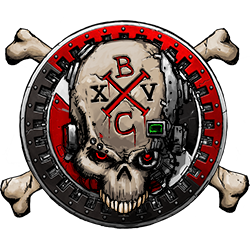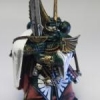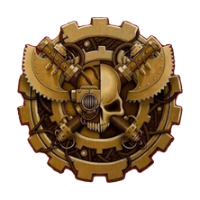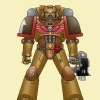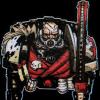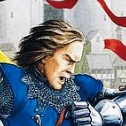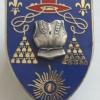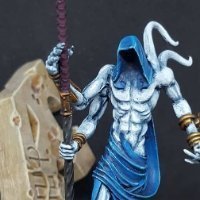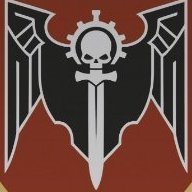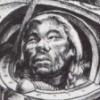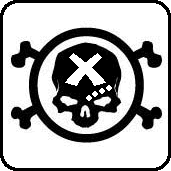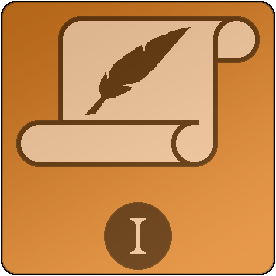-
Posts
27547 -
Joined
-
Days Won
112
Brother Tyler last won the day on December 14
Brother Tyler had the most liked content!
About Brother Tyler

Contact Methods
-
Website URL
http://www.bolterandchainsword.com
Profile Information
-
Location
The Temple of Oaths
-
Faction
VIIth Legion
Retained
- ++ FIDELIS MILITUS ++
Recent Profile Visitors
27975 profile views
Brother Tyler's Achievements
-
 Firedrake Cordova reacted to a post in a topic:
=][= Staff Member Retirements =][=
Firedrake Cordova reacted to a post in a topic:
=][= Staff Member Retirements =][=
-
 Mmmmm Napalm reacted to a post in a topic:
=][= Staff Member Retirements =][=
Mmmmm Napalm reacted to a post in a topic:
=][= Staff Member Retirements =][=
-
 Domhnall reacted to a post in a topic:
=][= Staff Member Retirements =][=
Domhnall reacted to a post in a topic:
=][= Staff Member Retirements =][=
-
 Dudley Nightshade reacted to a post in a topic:
Minimum engagement for new members before they can create new topics?
Dudley Nightshade reacted to a post in a topic:
Minimum engagement for new members before they can create new topics?
-
We already have such a system in place. New members are placed in the + FRATER NOVUS + group. While in this group, they are limited in the types of content that they can submit, and all content they submit must be reviewed and approved by a staff member before it will be visible to other members. This has allowed us to identify a number of spammers/spambots/bad actors quickly. Once these new members have passed muster, they are moved into the + FRATER DOMUS + group. You can see the discussion in which we developed the + FRATER NOVUS + group here. In the case you that cite, yes, the optics are suspect, but it might be legitimate information. Had there been a link in that post, we would have checked the link out before approving the post. Since there isn't a link, there is minimal risk to other members - it is up to individual members to decide whether or not they want to research the magazine that the new member describes. If it later turns out that this is inappropriate material or some sort of scam, we can deal with the member appropriately. It might simply be that this is a new member who is excited to pass some information on to the rest of the community (or it might be a marketing ploy).
-
 Lord_Ikka reacted to a post in a topic:
=][= Staff Member Retirements =][=
Lord_Ikka reacted to a post in a topic:
=][= Staff Member Retirements =][=
-
 lansalt reacted to a post in a topic:
=][= Staff Member Retirements =][=
lansalt reacted to a post in a topic:
=][= Staff Member Retirements =][=
-
 WrathOfTheLion reacted to a post in a topic:
=][= Staff Member Retirements =][=
WrathOfTheLion reacted to a post in a topic:
=][= Staff Member Retirements =][=
-
 Ace Debonair reacted to a post in a topic:
=][= Staff Member Retirements =][=
Ace Debonair reacted to a post in a topic:
=][= Staff Member Retirements =][=
-
 Dr. Clock reacted to a post in a topic:
=][= Staff Member Retirements =][=
Dr. Clock reacted to a post in a topic:
=][= Staff Member Retirements =][=
-
Over the last several years we have had a number of [former] moderators retire from their duties. However, I have been remiss in my duties, not announcing those retirements. The moderators are essential to the health and welfare of the site. Like you, they are hobbyists who enjoy the hobby and the community. They sacrifice their hobby time to perform moderator duties, and many of these members have served in this capacity for years. You don't always see the work that they do because much of it takes place behind the scenes, whether it's discussion about how to improve the site or how to deal with problems (and we try to take care of discipline privately, so you don't always see those actions). We are all indebted to each and every member who performs moderator duties. Over time, however, we all drift away from the hobby and the community. Sometimes hobbyists lose interest in the hobby; sometimes they find that they have less time to devote to the hobby/community; sometimes there are other reasons to retire. Regardless of their reasons, we are always appreciative for their contributions to the site and we wish them the best. The following members of the community have retired from moderator duties. Some of them are recent retirees, while others have retired over the last few years (and I've been a terrible slacker in not recognizing them before now). They are listed here in alphabetical order: @Brother Cambrius @Canadian_F_H @Claws and Effect @Commander Dawnstar @Daimyo-Phaeron Lenoch @Dusktiger @Eddie Orlock @Iron Father Ferrum @Johanhgg @Khulu (you may remember him as Tyriks) @Lord Ragnarok @Mandragola @sal of manders @schoon @Seahawk @TiguriusX @toaae @TrawlingCleaner Triszin Please join me and the rest of the staff in thanking each of these members for everything they've done for the hobby and the community - the B&C is better for their contributions. And now I'll submit myself to the Pain Glove in penance for not thanking these very deserving members in a more timely manner.
-
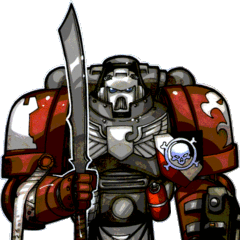
Fans protest at warhammer world
Brother Tyler replied to EuroHobbes's topic in + NEWS, RUMORS, AND BOARD ANNOUNCEMENTS +
A new video... -
I just went through the member database and all accounts with birthdays that were less than 16 years old have been deactivated (but not deleted). If nothing else changes (as far as our process goes), each of these accounts will be reactivated when they reach the sixteen-year mark. There are over 25,000 accounts that are 16 years or more old, so those are obviously of age. I am skeptical of many of the birthdays entered, however. For example, there are over forty whose birth years are 1910 or earlier, including one that is listed as 1874. And those are just the most obvious of the entries that are questionable. A more convincing lie would be to simply make oneself 21 years or more old. There is also someone claiming to have been born on February 31. And then there are the 22,577 accounts that are less than 16 years old and for which no birthday information is listed. In addition, there doesn't appear to be a way to make birthdays mandatory - all we can do is select between three options for who birthdays appear to (right now the system is set so that the only people who can see a member's birthday are the admins and the member themself, though you'll see a block wishing members a happy birthday on their birthday). As you can see from the articles I listed above and by evaluating some of the information I've provided in this post, self-reported birthdays are insufficient to meet the intent of the Australian regulation. Also, this isn't likely to stop with Australia, so you can expect us to implement some solution that applies across the board. And since it looks like this is something that will likely extend beyond Australia in the future, it's possible that Invision will incorporate something to help clients out. We're still exploring our options, but we're doing our best to implement reasonable measures in the interim.
-
As an initial adjustment, we've updated our Terms of Use to include a provision that all [prospective] members must be at least sixteen (16) years of age in order to register and maintain an account within the community. This is for everyone, not just our members from Australia. Members registering new accounts will have to enter their birthdate to verify their age. We all know how easy it is to lie when entering information on the Internet, however*, so that is just a minimum effort stop-gap until we figure out our long-term solution. Existing members will have to re-sign the Terms of Use (you've probably already done that if you're reading this while logged in), but that won't force them to enter their birthdate if they haven't already done so. Is this legislation intended to reduce online participation? Not in theory, except that it is meant to "delay" (the wording of the legislation) participation by minors. By extension, it is intended to reduce illegitimate participation (i.e., that which is harmful to minors). Since the legislation demands some form of identity verification, however, an obvious unintended consequence is that many existing/potential legitimate users will choose not to participate over concerns about privacy. I doubt that anyone here wants to submit their identity for verification (I know that I don't, and I own the site). Is this legislative overreach? I have an opinion on that, but I'm not a lawyer, so I'll refrain from voicing that opinion. What really matters is whether or not the legislation can be enforced. In the absence of any expert input on that, and in the absence of any [known] precedent, we're going to assume that the legislation can be enforced. If we simply assume that it can't, but it turns out that it can, fines would kill the site. So our plan of action will be based on preserving the site and its ability to serve the community. If it turns out that this legislation has no teeth, we'll still make every reasonable (and affordable) effort to fulfill its requirements (after all, the safety of all our users is vitally important), but we're not going to over-extend ourselves beyond reason. I can't envision any solution where we would require members to submit their identity information to us. If we implement some form of identity verification, it will be some external process that simply provides us with a greenlight that a [prospective] member meets the requirements; and ideally it will be some solution that doesn't retain any records on file, protecting your PII. At this point we don't know exactly what we're going to do, however. Suffice to say that protecting your PII is just as important to us as protecting our own PII. We don't yet know what other major social media platforms are doing to fulfill this requirement. We are monitoring them, however, and will likely mirror the minimum measures that are taken by those other platforms (i.e., the lowest common denominator) if they are legally sufficient. For what it's worth, if your account is more than sixteen years old, you're safe. * How many times have you actually read the complete Terms of Use/End User License Agreement when creating an online account?
-
That's something we're looking into. Another option is to just apply the 16+ age requirement to everyone, which would then only require some form of age verification, which can also be performed via biometrics (facial recognition and age estimation). There are a variety of apps that perform this type of verification, so we would have to balance the regulatory requirements with collecting minimal (ideally no) personal data and cost.
-
Brother Tyler started following =][= AUSTRALIAN SOCIAL MEDIA AGE RESTRICTIONS =][=
-
On 10 December, 2025, the Australian government will implement regulations forcing "age-restricted social media platforms ... to take reasonable steps to prevent Australians under the age of 16 from creating or keeping an account." You can see information on this from Australia's eSafety Commission at https://www.esafety.gov.au/about-us/industry-regulation/social-media-age-restrictions. In our initial review of the regulation, there was some question about whether or not these restrictions applied to the Bolter and Chainsword since some platforms will be considered age-restricted while others will not (https://www.esafety.gov.au/about-us/industry-regulation/social-media-age-restrictions/which-platforms-are-age-restricted). When we inquired, we were informed that the Bolter and Chainsword would be considered age-restricted. "Wait a minute! The Bolter and Chainsword is an American site (I am the site's owner and I live in the U.S. and the site's servers are also in the U.S.). Can this Australian regulation even be enforced on an American site?" Some of you may be wondering/asking. I'm not a legal expert, nor have I had the time to consult any legal experts (and our coffers can't afford that expense). For what it's worth, some of the major social media platforms that are explicitly identified as being subject to this law include Facebook, Instagram, Reddit, Snapchat, Twitch, X, YouTube (all of these are also American), and TikTok (Chinese). If the law can be enforced upon them, it can be enforced upon us. Ultimately, we meet all three of the basic conditions for Australia's age restriction: the sole purpose, or a significant purpose, of the service is to enable online social interaction between two or more end-users the service allows end-users to link to, or interact with, some or all of the other end-users the service allows end-users to post material on the service. So yes, this regulation applies to us and can be enforced. One of the things that separates us from the other sites that I named is that we have very little capital whereas they are all large companies with lots of capital and paid resources (i.e., technical experts that can incorporate age-restriction measures quickly and at low cost to them). They can also afford to pay fines that Australia might impose upon them until they are able to comply whereas fines have the potential to shut us down. Online safety measures in other countries/regions, notably the UK's Online Safety Act 2023 and the US's Kids Online Safety Act (2025) have been relatively easy to satisfy, largely due to the fact that our pre-existing family-friendly focus typically fulfilled the requirements of those laws and any necessary adjustments were minor. The upcoming Australian act, on the other hand, imposes some requirements that aren't easily implemented, and some of those may require capital. We're also going to have to look at the broad range of online safety laws (many are tracked here, but we'll have to expand the scope of our search to include other nations' laws). We haven't imposed age restrictions for membership in the past, largely due to the fact that the Warhammer 40,000 hobby is meant for a variety of age ranges. The Warhammer 40,000 game, for example, is meant for ages 12 and up. The Warhammer Adventures series of books, meanwhile, is meant for ages 8-12. Since our site is intended to cover the entirety of the hobby, we avoided age restrictions that would restrict any aspects of the hobby. While some of the themes of the setting are decidedly mature, the content of the official material has generally been kept at a family-friendly level (mostly), and our site has mirrored that, with prohibitions on mature content and tools for reporting inappropriate content. Australia's regulatory guidance, however, counters that. We are conducting a risk analysis and exploring our options for fulfilling Australia's regulatory guidance. Our goal is to continue providing service to as many hobbyists around the world as possible, including Australians [ages 16 and up]. This may require us to implement some additional measures, however. With the 10 December deadline fast approaching, we may be forced to implement some (hopefully temporary) measures to ensure that we don't violate the law. Note that "reasonable steps" does not mean that we simply ask a question and allow [prospective] members to self-report. It's eminently easy to lie and failure to verify someone's claimed age would be dereliction on our part (i.e., not "reasonable"). Similarly, the uses of VPN are well-known and any method that doesn't account for the ability to "lie" about one's location through VPN would be derelict. How will this impact you (whether or not you live in Australia)? In the likely event that we have to require proof of age in the account creation process, everyone will have to submit proof that includes both age and residency information. (Yes, all existing accounts will also be subject to this requirement.) Anyone residing in a country/region with age restrictions will only have their account approved (or preserved) if they meet those age restrictions. Anyone who is unable/unwilling to provide the age/residency proof, or who fails to meet the age restrictions for their country/region will not be approved for an account (i.e., new accounts won't be approved and existing accounts will be adjusted*). Until we are able to fully implement these measures, we may be forced to temporarily block access for users in Australia starting 10 December. * We have several options here with regard to the existing accounts. One option is to simply delete the accounts, but that removes a lot of content and achievements. Another option is to place them in a holding status (some type of new group) where they are inaccessible until the member provides proof that they are of sufficient age. There may be other options after we conduct a more thorough analysis. Does this suck? Absolutely. The stated goal ("protecting young [people] at a critical stage of their development") is perfectly understandable and supportable, so we're not here to gripe about the socio-political aspects of this (and any such commentary will be removed). At the very least, this requires some process where [prospective] members are required to submit sensitive personally identifiable information which we really don't want to collect. Part of our analysis, then, is to see if there's a way for the verification process to delete all such information after the account is approved. Your thoughts on this are welcome. Note that we're not here to complain about the situation. It is what it is and complaints will be removed. At this point we're here to look for solutions.
-
 Brother Tyler reacted to a post in a topic:
=][= Banner of the Month - December 2025 =][=
Brother Tyler reacted to a post in a topic:
=][= Banner of the Month - December 2025 =][=
-

=][= Banner of the Month - December 2025 =][=
Brother Tyler replied to Brother Tyler's topic in + AMICUS AEDES +
D'oh! I got a little busy in real life and forgot to resolve this in a timely manner. Congratulations to @NovemberIX, whose banner was selected as banner of the month for December, 2025. Since the banner started in the rotation four days late, it will run through February 5, 2026 to get the full two months. And I will now submit myself to the Pain Glove as punishment for my tardiness. -

Legio Roll of Honour
Brother Tyler replied to Brother Tyler's topic in + THE LEGIO BOLTER AND CHAINSWORD +
The Legio was formed before the Primaris existed were revealed and continues to exist in the Era Indomitus, so both firstborn and primaris work. -
-
 Brother Tyler reacted to a post in a topic:
Legio Roll of Honour
Brother Tyler reacted to a post in a topic:
Legio Roll of Honour
-
 Brother Tyler reacted to a post in a topic:
Legio Roll of Honour
Brother Tyler reacted to a post in a topic:
Legio Roll of Honour
-

Legio Roll of Honour
Brother Tyler replied to Brother Tyler's topic in + THE LEGIO BOLTER AND CHAINSWORD +
The only model that needs to represent anyone in particular is the Legio mini-me, and then only if you choose to submit one (or more) as a Legio mini-me. You can even submit 2 or 3 Legio mini-me's, all of the Legio mini-me's represent the same character (you!), but at different points in his career. Any models that aren't your Legio mini-me simply represent (random) members of the Legio, from any Chapter that you desire. You don't even have to give them backstories or names. All you have to do is pick fun Adeptus Astartes models that you want to paint up in Legio colors.
